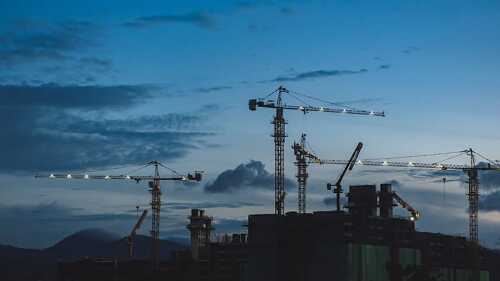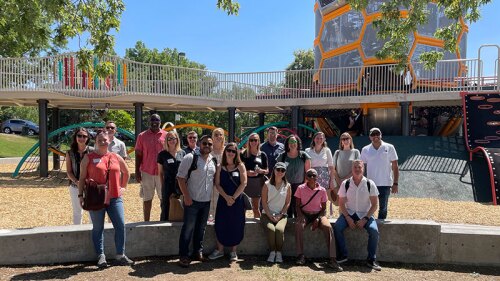Industry leaders speaking at the recent ULI Asia Pacific Summit said that green financing and new building materials are helping them make their developments more sustainable without hurting their bottom line. Sustainability is also driving some businesses to rethink the wages and taxes they pay as part of their corporate citizenship.
“Making a profit and making the world a better place are not incompatible,” said panel moderator Nick Brooke, chairman of ULI Asia Pacific. “Designing better real estate and better places is the way to achieve both aims.”
David Warneford, managing director of Hines Australia, took the argument one step further, saying, “You can’t be commercially successful unless you are sustainable.”
Sustainability is not only about environment, it should be about company longevity, people , community @CapitaLand @ULI_AsiaPac @Hines #ULIAPACSummit pic.twitter.com/N6hPrFznpk— Kelly Mai (@KellyMai) June 12, 2019
Sustainability is a crucial component of Singapore real estate, which is vulnerable to hotter weather and rising sea levels, said Lynette Leong, chief sustainability officer at CapitaLand. The Singapore-listed property company also invests in China, where green issues are bound up with the need to deliver more livable cities.
Finance in Asia is buying into sustainability: between 2015 and 2018, Chinese companies issued $30 billion of green bonds, making it the largest center for issuances outside the United States and there are around 500 green private-equity funds in China, said Leong. Last year, CapitaLand raised a S$300 million (US$219 million) green loan from Singaporean bank DBS; the cost of borrowing is lower if the proceeds are used for more sustainable purposes.
“Sustainability is about the longevity of the business,” she said.
Meanwhile, Boston Properties, which has a $21 billion green development pipeline, issued $1 billion of green bonds in 2018 and has priced an $850 million offering this year. Owen Thomas, chief executive of Boston Properties and ULI global chairman-elect, said that the push toward sustainability came from both customers and investors, with a number of new funds overweight in green companies and underweight in those that fall short.
Thomas also argued that sustainability no longer simply means “being green” but being a good corporate citizen in a much wider sense: paying staff and contractors well, paying due taxes, and being a responsible member of the community.
The panelists outlined some of the ways their developments were becoming greener and how this also benefited the bottom line. Leong explained how the CapitaGreen office tower in Singapore drew in cool air at the top of the building to reduce cooling costs, saving 10 percent each year on the energy bill. CapitaGreen has been 99 percent leased since it was launched in 2014, said Leong, and furthermore commands a 10 percent rental premium to neighboring buildings.
In China, the mall at CapitaLand’s Raffles City Hangzhou was the first in the country to use natural ventilation and the Leadership in Energy and Environmental Design (LEED) Gold development’s sustainability credentials have helped it maintain 97 percent occupancy, she said.
In Australia and the United States, Hines is beginning to develop timber-framed buildings in central business district (CBD) fringe locations, said Warneford. These buildings have a lower environmental impact due to the use of renewable timber and also attract businesses looking for more character in their office space.
Wellness and healthy buildings are of increasing importance, the panel agreed; however, “it is difficult to measure the value of wellness, it is hard to quantify,” said Warneford. Earlier in the conference, a panel had discussed healthy buildings and the challenge of explaining their value to tenants. However, as staff costs account for 90 percent of business overheads, compared with 9 percent for rent and other expenses and 1 percent for energy, it should be argued that a small increase in productivity “is like getting your energy for free,” said Billy Grayson, executive director for ULI’s Center for Sustainability and Economic Performance.
The most obvious and practical benefit of sustainable practice is happy tenants, the experts concurred. “If you are retaining your tenants, there’s a good chance you are doing O.K. on sustainability,” Warneford said.
Brooke asked the panel to offer advice on how other real estate companies could make their businesses more sustainable. The panel agreed that having dedicated staff and—more important—having sustainability become part of the fabric of the business, were crucial. CapitaLand’s Leong added that collecting and analyzing data was key. “Use technology to reduce energy consumption,” she said.



